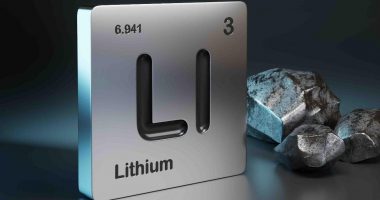- 2020 is certainly a year to look back on for BrainChip (BRN), who celebrated an impressive number of wins and tech developments
- The AI tech company focused on developing its Akida device, a semiconductor aimed at revolutionising the way we use technology
- While BrainChip’s share price hit a year-low of 3.1 cents in March last year, its 97-cent high overshadowed this
- The tech stock officially combined Akida with Japan-based Socionext’s AI platform to form a low-power, high-speed system
- 2020 also saw the company reach a billion-dollar valuation in September amid the establishment of a software development centre in India and the validation of Akida
- BrainChip also detailed a new collaboration with Vorago Technologies, which supported a phase one NASA program
- To cap off the year, NASA ordered an Akida Early Access Evaluation Kit to evaluate the potential use of Akida in its spaceflight operations
- While it can’t be certain exactly what’s in store for BrainChip this year, the tech stock is heavily eyeing the commercialisation of the Akida device
- BrainChip ended the day 2.17 per cent in the red with shares trading at 45 cents
2020 is certainly a year to look back on for BrainChip (BRN), who celebrated an impressive number of wins and tech developments.
The tech developer received a flood of interest last year which, by the end of December, led to its shares to jump a staggering 500 per cent in 12 months.
About BrainChip
BrainChip is an artificial intelligence (AI) company that is developing and commercialising the Akida neuromorphic system-on-a-chip (NSoC) product.
The device is an AI-powered semiconductor that is aimed at changing the way people use technology.
What sets BrainChip’s Akida device apart is that it can unlock the potential of “edge computing” through a high-performing and low-power AI processor.
Edge technology is the idea that every electronic device in your home can be connected to the internet, and to each other.
The hyped tech can be applied to numerous smart applications including home automation, security cameras, sensors and medical instruments. However, in the last few months, BrainChip has shown the Akida device can be used in spaceflight and aerospace applications.
While BrainChip celebrated a bout of wins, including a share price that soared to 97 cents at one point, it still experienced some lows.
The lows
In March 2020, BrainChip’s share price experienced its biggest low of the year — falling to 3.1 cents.
While this is considered a slump for the company, BrainChip is certainly not the only stock who suffered a blow during the early days of the COVID-19 pandemic.
Towards the end of April last year, BrainChip’s share price tipped over the 5 cent mark. During this time, the company received a US$412,000 (roughly A$529,926) CARES loan from the U.S. Government which helped protect employment during a global crisis.
The company had also just received $3.12 million in fresh funding to support the development of Akida, which would have been more difficult while cutting costs in response to the pandemic.
It wasn’t until August 2020 that BrainChip posted its half-year report, which included a loss of US$6.85 million (roughly A$9.5 million at the time).
Despite posting a loss that was 53 per cent more than that of the prior corresponding period, the tech stock’s share price was still floating around 30 cents.
It seems BrainChip’s run of agreements and tech developments were enough for its climb to continue.
The highs
At the turn of the first quarter, BrainChip announced it had officially combined its Akida device with Japan-based Socionext’s AI platform. The pair had an existing relationship since teaming up in June 2019 to develop Akida.
Socionext, a “system on a chip” (SoC) developer, integrated its processor with Akida to create a high-speed, low-power video and imaging analysis system.
The companies then sent off the completed Akida design files to its wafer fabrication partner, TSMC, which would help to validate the device’s intellectual property.
Over the next few months, BrainChip locked in multiple agreements.
In May, an evaluation agreement was signed to test the Akida device in smart vehicles.
This was followed by a deal with European automotive supplier, Valeo, and involved Akida being used to process data in new ways. Essentially, this would bypass the need for an exterior processing unit and provide a better solution in a compact package.
September surge
In early September, the AI company detailed a new collaboration with Vorago Technologie, which signed the Akida Early Access Program Agreement. This meant Vorago could use its HARDSIL tech with Akida to support a phase one NASA program. The program aims to develop a neuromorphic processor that meets spaceflight requirements.
Vorago’s involvement meant NASA-related expenses would be covered and, in return, Vorago would get early access to Akida and evaluation boards.
Importantly, BrainChip validated the Akida device and soon backed this up with the establishment of a software development centre in India.
The market responded favourably — leading BrainChip’s share price to hit 75.5 cents. The tech stock’s market valuation had also hit the billion-dollar mark in less than 10 trading days.
Trailing from a string of previous wins, BrainChip announced it would also join the S&P/ASX’s All Technology Index.
And as the year closed, BrainChip completed the register-transfer level (RTL) design step for the Akida system, which saw its shares spike 7 per cent. This was a key part of the production process as it’s responsible for modelling the flow of digital signals within the system’s semiconductor.
Then, the company transferred the design to Socionext to complete the physical design, as well as take on all other engineering tasks necessary for photomask creation and wafer fabrication.
With the nitty gritty details of the production process completed, BrainChip capped off the year with an intellectual property (IP) licencing agreement with Renesas Electronics America.
This deal would see the semiconductor producer gain a single-use, royalty-bearing licence to use the Akida IP.
Further, NASA ordered an Akida Early Access Evaluation Kit to evaluate the processor itself for potential use in its spaceflight operations.
On New Year’s Eve, BrainChip’s shares closed at 43 cents.
What’s in store for 2021?
While it can’t be certain exactly what’s in store for BrainChip this year, the tech stock is heavily eyeing the commercialisation of the Akida device.
It will also be interesting to see the turn-out of NASA’s evaluation of the device and whether Akida is, in fact, suitable for NASA’s spaceflight operations.
Financial services company Morningstar considered BRN shares fairly valued at 73 cents each, although it admits the price target comes with extreme levels of uncertainty.
BrainChip ended the day 2.17 per cent in the red with shares trading at 45 cents.








